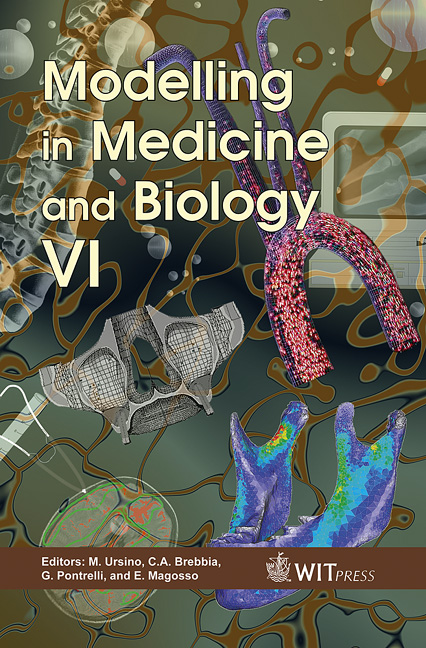FE-simulation Of The Maxillary Sinus Floor Augmentation
Price
Free (open access)
Transaction
Volume
8
Pages
10
Published
2005
Size
1,158 kb
Paper DOI
10.2495/BIO050441
Copyright
WIT Press
Author(s)
J. Lenz, S. Rues, H. P. Schierle, K. Schweizerhof & H. J. Schindler1
Abstract
The sinus floor augmentation was put into practice about 20 years ago to provide the severely atrophic maxilla (alveolar ridge inappropriate for classical implantation) with dental implants. In the most frequently used surgical method a window-like lid is milled into the buccal bone shell adjacent to the paranasal sinus in the region of teeth 5 - 7, and the bone lid is carefully flapped into the sinus without injuring the mucous membrane. Thus, a cavity is created into which either autologous bone material (e.g. from the chin or iliac crest) and/or bone substitute can be augmented to yield an adequately spacious support for (up to three) implants. After sufficient maturation of the graft (healing phase of several months) the implants can be connected to a superstructure. In this contribution the sinus floor is geometrically reproduced on the basis of a selfdeveloped three-dimensional model of the facial skull which contains all cortical and spongy structures. With the aid of the Finite Element Method (FEM) the distributions of stress, strain and displacement in the cortical and spongy bone as well as in the graft are analysed under different masticatory loads with special attention to the force deduction in the different structures. A variation of Young’s modulus Egraft of the augmented material between 0.01 and 15 GPa (cortical bone), thus simulating different degrees of maturation, proves that already about half of the external axial force is picked up by the graft when it reaches the maturation of spongy bone (2 GPa). Furthermore, the analysis shows that for Egraft = 2 GPa the microstrains under average chewing forces fall into the physiological or mild overuse window according to Frost’s Mechanostat Theory. Keywords: implantology, sinus lift, augmentation, bone remodeling, FEM.
Keywords
implantology, sinus lift, augmentation, bone remodeling, FEM.





